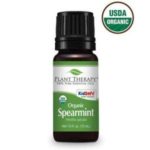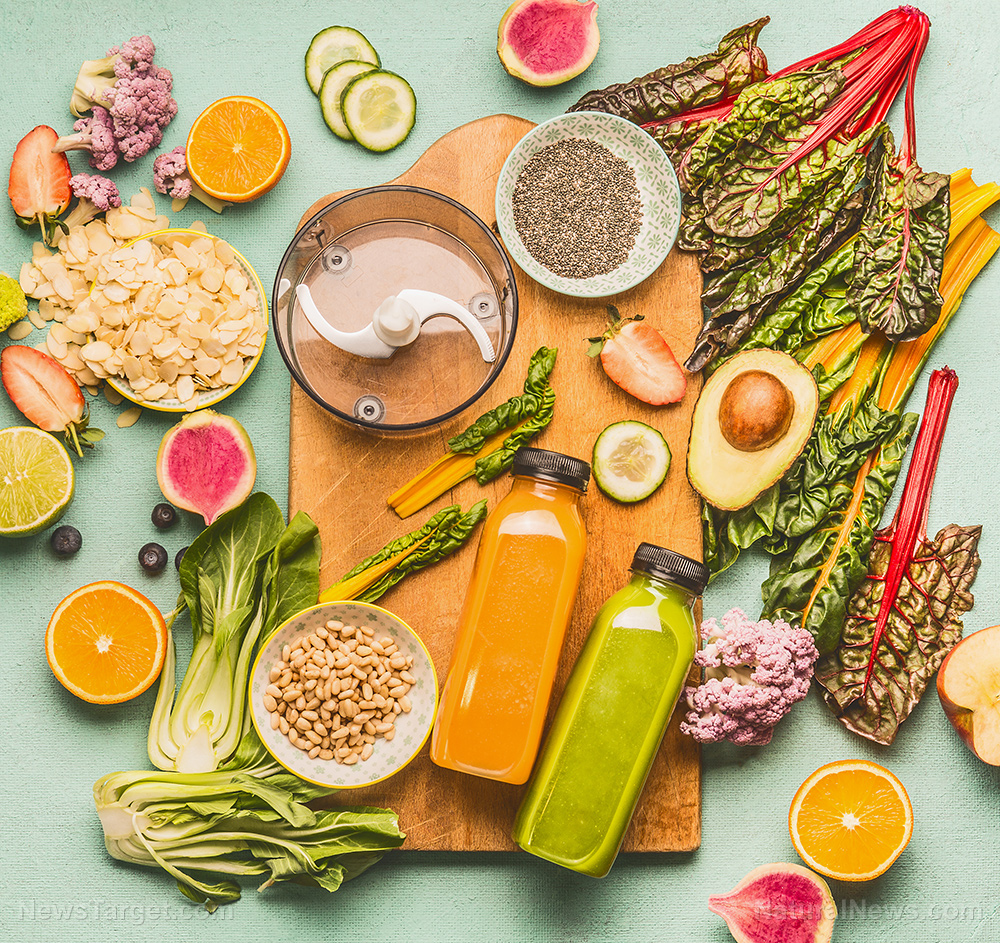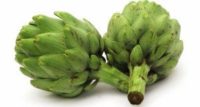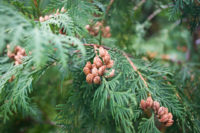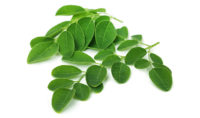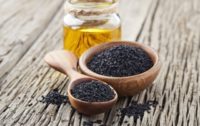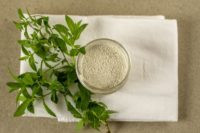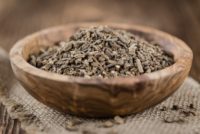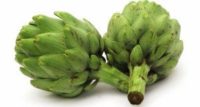By Michael By Andy Coghlan Many plastic bottles are sold as “BPA-free” — meaning they don’t contain bisphenol A, an ingredient known to disrupt reproduction in mice. But now it seems… …read more Source: Natural Blaze
By Heather Callaghan By Heather Callaghan, Editor Scientists are always looking for the most perfect, most exotic superfood that will do away with our belly fat woes. Have they found the holy grail hiding in the Amazon?… …read more Source: Natural Blaze
By Michael By Aaron Kesel The FDA has announced that some flea and tick medications can cause adverse reactions in dogs and cats, issuing warnings to pet owners and vets. Meanwhile, the CDC has announced that… …read more Source: Natural Blaze
By REALdeal Source: Studies Link Canine Cancers to Lawn Chemicals For more content like this visit REALfarmacy.com. Lawn chemicals, particularly, ones containing 2,4-D, have been linked to at least two types of canine cancers. Studies found that lawn chemicals travel to neighboring yards and inside homes, and chemicals have been found in the urine of dogs whose owners did not spray their lawns. The authors of the studies state how their findings […] Source: Studies Link Canine Cancers to Lawn Chemicals Learn more at REALfarmacy.com – Healthy News and Information. …read more Source: realfarmacy.com
By Susan Patterson Spearmint essential oil is similar to peppermint essential oil. It has a pleasant minty aroma and refreshing characteristics like peppermint, and it is often substituted for it in aromatherapy as peppermint can be too strong for some people, and it may even induce skin irritation or other unwanted side effects on sensitive skin. Spearmint, officially known as Mentha spicata, is a safer, milder alternative with far less menthol than peppermint, and it can be used for a wide range of medicinal purposes, from treating fatigue and headaches to oral health. While it hasn’t been researched quite as [More]
By AdminM by Brian ShilhavyEditor, Health Impact News Earlier this year (2018) we reported that a group of Minnesota parents filed a federal civil rights lawsuit accusing Dakota County and the State of Minnesota for kidnapping their children and placing them unnecessarily into foster care. See: Parents File Federal Civil Rights Lawsuit Against Minnesota Because CPS Kidnapped Their Children The parents are part of an organization called The Family Preservation Foundation, which also goes by the name Stop CPS from Legally Kidnapping Children. Amanda Weber with son Zayvion. Photo by Randy …read more Source: Health Impact News
By Hesh Goldstein Eating is something we take for granted due to conditioning. As little kids what choice do we have other than eating what our parents put before us? But, as we get older and somehow develop consciousness, we can make choices. Hopefully, the processes by which some of our food choices get to us will enable us to seriously consider other dietary avenues. Many people feel uncomfortable about cooking and eating lobsters; and for good reason: lobsters suffer severe and prolonged pain when cut, broiled, or boiled alive. Wouldn’t you? Lobsters are sensitive beings who struggle against death [More]
By Michael By Nicholas West One of America’s oldest insurance companies, John Hancock, has its eyes set firmly on the future. With the arrival of Big Data and the now never-ending stream of information… …read more Source: Natural Blaze
By Isabelle Z. (Natural News) When you think of breast …read more Source: Natural News
By Vicki Batts (Natural News) New findings from a Cochrane …read more Source: Natural News
By Dr. Mercola If you’re visiting the Pacific Islands, you might be given a ceremonial drink called kava kava that’s made from the kava plant (Piper methysticum), a shrub that can grow up to 3 meters (9.8 feet) tall.1,2,3 The kava plant is a member of the pepper family.4 Large, green and heart-shaped leaves grow thickly on its green, red-and-black striped or spotted stems,5 and its roots, often used to make kava kava, resemble bunches of knotty, woody and hairy branches.6 Kava’s Health Benefits Kava is known for its relaxation capabilities, which may help …read more Source: mercola
By Lori Alton, staff writer (Naturalhealth365) Age-related macular degeneration, the leading cause of visual impairment and blindness among adults over 60, currently affects over 15 million people in the United States. In fact, the National Institute of Health reports that more Americans suffer from this potentially debilitating eye disease than from cataracts and glaucoma – combined. And, as a sizable amount of the population rounds the curve into their “golden years,” the number is expected to rise even higher. As scientists search for non-toxic, natural methods of treatment and prevention, a new Australian …read more Source: Natural Health 365
By Dr. Mercola By Dr. Mercola Have you ever wanted to quit your day job and start a chicken farm? If this thought has ever crossed your mind, but you believe this is about as far-fetched a dream as becoming an astronaut at retirement age, think again. The video above tells the story of Paul Grieve, who quit his accountant job to cofound Primal Pastures. As noted on its website, Primal Pastures is the outgrowth of:1 A belief that we are experiencing a major food crisis A sound idea of how to fix it A vision of raising the best [More]
By Dr. Mercola By Dr. Mercola If you live in the U.S., there’s a good chance you don’t put much thought into the best position in which to poop. You simply sit down on the toilet and let nature take its course. Except, for some people, this process isn’t simple at all. Up to 27 percent of adults may be chronically constipated,1 which can lead to other problems like anal fissures, rectal prolapse, fecal incontinence and urologic disorders.2 Meanwhile, so-called “pressure diseases,” such as hemorrhoids, varicose veins, diverticulitis and hiatal hernia (in which part of your …read more Source: mercola [More]
By AdminM Congressman Dan Burton at the 2012 Congressional Autism hearings. Robert F. Kennedy, Jr. Demands the Office of the Inspector General and Congress Investigate Department of Justice for Fraud and Obstruction of Justice by Children’s Health Defense WASHINGTON, D.C. Robert F. Kennedy Jr., Chairman of Children’s Health Defense (CHD), and Rolf Hazlehurst, parent of a vaccine-injured child, petitioned the Department of Justice (DOJ) Office of Inspector General (OIG), and the Senate and House Judiciary Committees today to investigate actions taken by federal personnel during the “Vaccine Court” Omnibus Autism Proceedings (OAP). Recently discovered evidence …read more Source: Health Impact [More]
By Tracey Watson (Natural News) Thuja oil, known to Native …read more Source: Natural News
By Edsel Cook (Natural News) A local tree has captured …read more Source: Natural News
By Dr. Mercola Rooibos tea has been a popular herbal tea in South Africa for centuries. It’s also recently gained popularity among tea drinkers worldwide for being a palatable alternative to green and black tea, which has a bitter taste. Another sought-after characteristic of rooibos tea is its ample antioxidants, which give it its valuable health benefits. What Is Rooibos Tea? Rooibos tea, also known as red tea or red bush tea, is an herbal tea that’s derived from the Aspalathus linearis plant, a bush native to the mountainous region of Cederberg in South Africa. The methods used to make [More]
By AdminM by Paul FassaHealth Impact News Black cumin seed oil, technically known as Nigella Sativa or N. sativa, has been used for thousands of years for several maladies, disorders, and both infectious and non-infectious diseases, especially throughout ancient Mideast, Egypt, and Greece. Currently, black cumin seeds and oils (from the seeds) are used as traditional medicines in the Mideast as well as parts of Africa and Asia. It’s principal and most abundant bioactive phytochemical ingredient is thymoquinone. In addition to the multitude of anecdotal reports demonstrating efficacy and safety, there has been …read more Source: Health Impact News
By AdminM If Vaccines Injure Pregnant Women or Their Unborn Babies, What Will the Vaccine Court Do? by Barbara Loe FisherCo-founder & PresidentNational Vaccine Information Center (NVIC) National Vaccine Injury Compensation Program: Adding the Category of Vaccines Recommended for Pregnant Women to the Vaccine Injury Table This public comment is being submitted on behalf of more than 200,000 supporters of the nonprofit National Vaccine Information Center, a charity founded in 1982 by parents of DPT vaccine injured children to prevent vaccine injuries and deaths through public education. 1 I was among the …read more Source: Health Impact News
By Heather Callaghan By Joe Battaglia In our social lives, we’re constantly engaged in what researchers call “meta-perception,” or trying to figure out how other people see us. Do people think… …read more Source: Natural Blaze
By Julie Fidler Obesity has become such a widespread issue in the United States that the U.S. Preventive Services Task Force (USPSTF) recommended in a recent report that people with a body mass index (BMI) of 30 or higher should be prescribed intensive behavioral interventions. According to data from the U.S. Centers for Disease Control and Prevention (CDC), more than 35% of men and 40% of women in the United States are defined as obese. While an overweight population is quick to undergo weight loss surgery and shell out money on unproven weight loss products, deeper issues are often ignored [More]
By Debbie Wolfe Everyone likes a bright, healthy smile. However, using over-the-counter teeth brightening creams or even getting a whitening treatment from your dentist is expensive and, honestly, scary. These bleaching treatments contain a hodgepodge of high-strength chemicals that can make teeth more sensitive and can permanently damage the tooth enamel and gum tissue if overused. There is good news. There are natural ways to whiten teeth, keep them healthy, and remineralized using non toxic ingredients. Watch this one minute video on how to make this easy but effective too whitening powder. Don’t forget to is a natural, gentle cleanser, [More]
By Susan Patterson Valerian root is native to Europe, although today it can be found growing wild in grasslands of parts of Asia and in North America. It’s also used as an attractive garden plant. It contains volatile oils, including valerenic acids, less volatile sesquiterpenes and valepotriates (esters of short-chain fatty acids), which are active compounds believed to be responsible for valerian’s ability to provide a calming, restorative effect on the central nervous system. It has a long history of use, dating all the way back to the 2nd century, for treating insomnia and nerve disorders like anxiety. The name [More]
By Dr. Mercola By Dr. Mercola Turmeric, a yellow curry spice used in Indian cuisine, has a long history of medicinal use in traditional Chinese medicine (TCM) and Ayurvedic medicine. Curcumin is one of the most well-studied bioactive ingredients in turmeric,1 having over 150 potentially therapeutic activities, including anti-inflammatory, antimicrobial and powerful anticancer actions. Cancer has an incredible global impact and places a vast financial and emotional burden on the families it touches. Nearly 40 percent of American men and women will be diagnosed with cancer in their lifetime and over $125 billion is spent annually on medical treatment …read [More]
By Dr. Mercola By Dr. Mercola Today, many are so used to the idea an antibiotic can cure almost any infection, few consider the possibility this remedy may soon no longer be an option. Antibiotics have increased human life span by nearly a decade and certain conditions could simply not be treated without them.1 In many ways, modern medicine is built on a foundation of antibiotics. It is now severely threatened, however, by the emergence and phenomenal growth of antibiotic-resistant bacteria. Prior to the development of antibiotics, half of the world’s population died from infections. The reality is antibiotic-resistant microbes [More]
By Stephanie Vick, staff writer (NaturalHealth365) An estimated one in 10 women has polycystic ovary syndrome (PCOS), a condition that can make it very difficult for them to have children. PCOS causes irregular menstrual cycles and commonly strikes women in their 20s or 30s – lasting beyond menopause. With PCOS, hormones become imbalanced creating a risk of infertility and chronic illnesses. Treatments vary, but one study shows a combination of herbal medicine and lifestyle changes can help. The key here is to find a healthcare provider that appreciates this kind of …read more Source: Natural Health 365



















